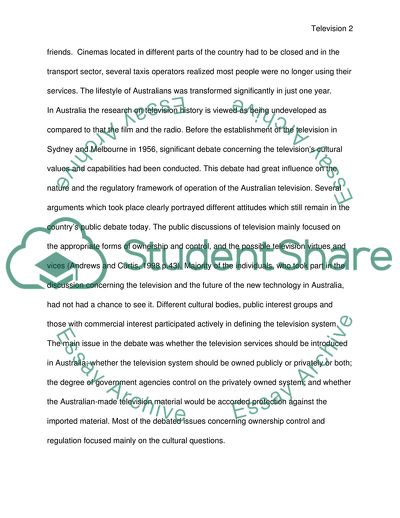Cite this document
(What were the key debates and questions framing the introduction of Essay, n.d.)
What were the key debates and questions framing the introduction of Essay. https://studentshare.org/media/1752938-what-were-the-key-debates-and-questions-framing-the-introduction-of-television-to-australia-in-1956-outline-and-analyse-the-different-perspectives-of-government-industry-and-audiences
What were the key debates and questions framing the introduction of Essay. https://studentshare.org/media/1752938-what-were-the-key-debates-and-questions-framing-the-introduction-of-television-to-australia-in-1956-outline-and-analyse-the-different-perspectives-of-government-industry-and-audiences
(What Were the Key Debates and Questions Framing the Introduction of Essay)
What Were the Key Debates and Questions Framing the Introduction of Essay. https://studentshare.org/media/1752938-what-were-the-key-debates-and-questions-framing-the-introduction-of-television-to-australia-in-1956-outline-and-analyse-the-different-perspectives-of-government-industry-and-audiences.
What Were the Key Debates and Questions Framing the Introduction of Essay. https://studentshare.org/media/1752938-what-were-the-key-debates-and-questions-framing-the-introduction-of-television-to-australia-in-1956-outline-and-analyse-the-different-perspectives-of-government-industry-and-audiences.
“What Were the Key Debates and Questions Framing the Introduction of Essay”. https://studentshare.org/media/1752938-what-were-the-key-debates-and-questions-framing-the-introduction-of-television-to-australia-in-1956-outline-and-analyse-the-different-perspectives-of-government-industry-and-audiences.


